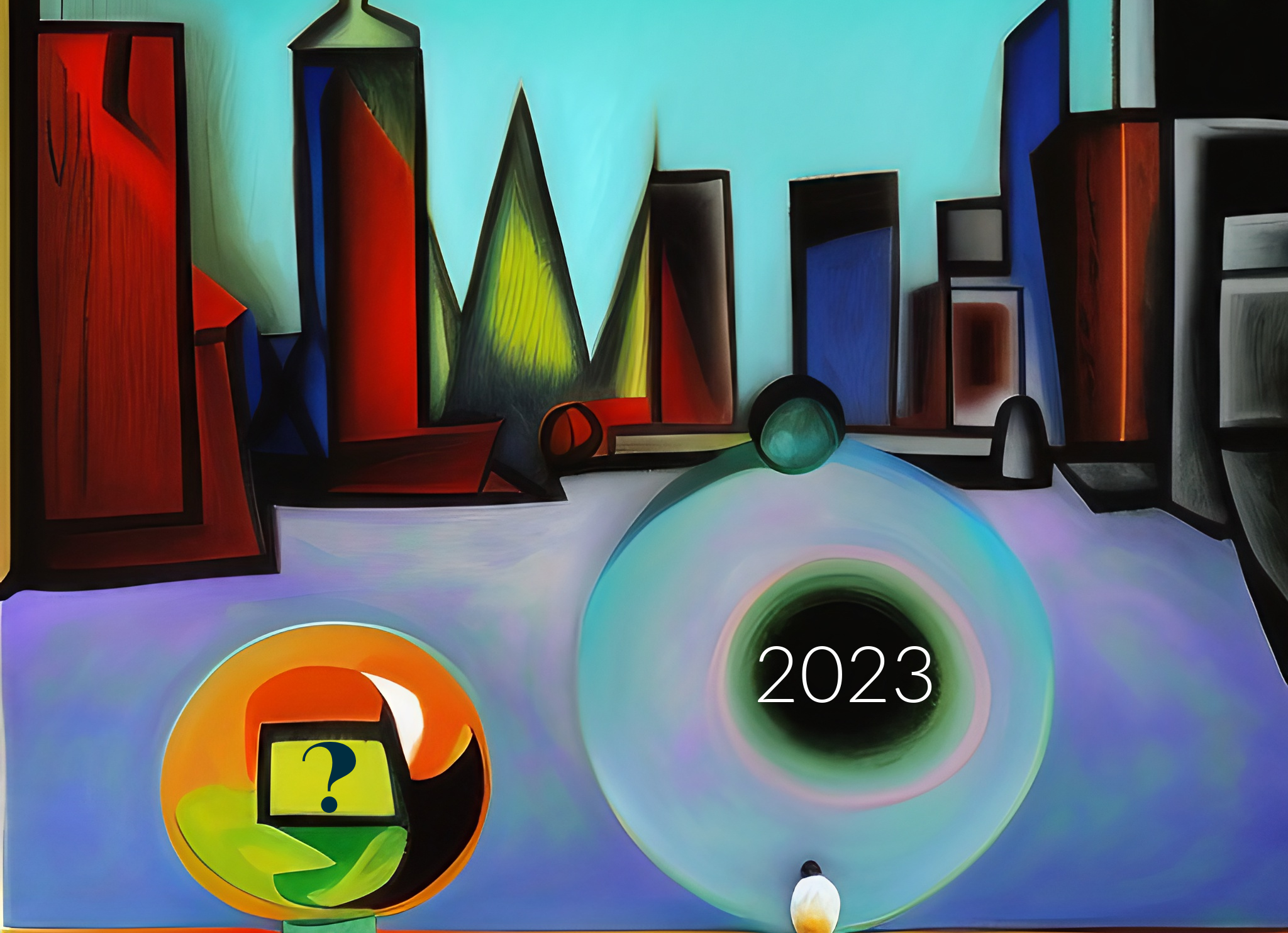
[ad_1]
2023 will not be business as usual

While 2023 shapes up as a challenging year for business, it will definitely not be business as usual. Our payment industry leaders see fraud challenges ahead, a focus on innovative fintech solutions, and big leaps in digital automation and transformation. Forget big tech. This year will be all about “smart tech.”
Raj Dasgupta notes that fraudsters are getting better and says we must be ready to meet them head-on. John Lunn expects more tokenization, bank-to-bank and alternative payments while financial inclusion grows. Scott Harkey sees a role for new payment options, FX and money movement, and a jump in outsourcing new solutions. Tom Bell believes embedded payments are ready for prime time at last.
Cecilia Tamez points to mobile payment growth from 1% to 49% in Kenya in just two years and expects substantial growth in other emerging markets along with greater financial inclusion, cross-border innovations, and “co-opetion” by banks and fintechs. Steve Smith anticipates less talk and more adoption of digital transformation and automated AP and AR solutions. In retail, Michael Jaszczyk predicts more technology uptake by retailers to remain competitive and reduce overhead. Finally, Joman Kwong sees additional digital process automation as business scrambles to find savings and efficiencies.
I’m optimistic with the smarter use of technology, we can make 2023 much better than business as usual. ~ Douglas Hall, entrepreneur, investor, and Publisher, PaymentsNEXT
Payments will get easier, fraudsters will get better. Are we ready?

The extent of the proliferation of mule accounts used for laundering money in 2022 was surprising. We were aware of the problem of sleeper accounts, recruitment of mules and associated money laundering for a long time but the scale at which this happened last year was eye-opening.
With the imminent launch of FedNow in 2023, payments may become even easier and faster for consumers. However, I’d be watching the space keenly to see how fraudsters take advantage of the instant payments infrastructure.
Remote access, social engineering scams, and money laundering are often connected with fraudsters trying every trick to defraud regular consumers. These will continue to be significant challenges in 2023. ~ Raj Dasgupta, Director of Fraud Strategy, BioCatch
Tokenization, bank-to-bank, alternate payments, & financial inclusion take center stage

Tokenization is big and will continue to be top of mind for merchants in 2023. With data security and regulations in place – and more on the way – many merchants are asking how tokenization will change what they do. They’ll need to turn more towards payment orchestration platforms to help with tokenization and increase payment data security. If they don’t, they’ll have to turn to a PSP and lock themselves into a long-term relationship.
Bank-to-bank payments are cheaper for the merchant, but no current incentive exists for the consumer to use them. Merchants pay a much lower percentage rate with customers who use this and other alternative payment methods than credit cards. With Open Banking already prominent in the UK and growing in the US, in 2023, merchants should ask how they can use this discount to benefit consumers, drive preference, and deliver cost savings back to the consumer to incentivize them to use these cheaper methods.
Most people are already starting to move away from traditional credit card payments. Interest rate hikes by the Fed, growing inflation and consumer debt, will make alternative payment methods even more attractive to consumers in the year ahead. If done right, we’ll see real-time and instant payments continue to gain prominence, and Buy Now Pay Later will not be going anywhere either.
Greater financial inclusion is always a concern within fintech and payments. Not everyone has a credit card, and with many Americans already at their credit limit, greater financial inclusion in the year ahead means merchants will need to evaluate their payment strategies and offer alternative payment methods. People still have to eat and buy necessities. Merchants who only offer credit card payments exclude potential customers and reduce financial inclusion by limiting their customers to those with credit limits. As a solution, merchants should consider their cross-border payments strategy and offer alternative payment methods like real-time payments, debit card processing or other payment options. That way, customers who can’t afford to shop at a store due to their credit limit can continue to get the items they need. ~ John Lunn, Founder & CEO, Gr4vy
Mobile wallet growth, co-opetition, cross-border payment innovations & financial inclusion ahead

The pace of growth for cross-border payments to alternative channels like mobile wallets was surprising. For example, Dandelion saw Kenya’s payments to mobile wallets grow from 1% in 2019 to 49% in 2022, and the Philippines grew 300% this year alone. We expect to see this trajectory across many emerging markets.
Demand for business payments to emerging markets has grown significantly. As a result of supply chain disruptions, many businesses are addressing operational resilience by diversifying their supply chains, placing increased demand on new markets that many banks are unequipped to support.
In 2023, co-opetition will be an increasingly sustainable option for banks and fintechs; they will work together to develop new global payment solutions that address modern needs, interoperability between banks, and alternative payment channels like mobile wallets. More technology companies, like accounting and social media platforms, will seek embedded financial solutions to remove friction from the customer experience.
Financial inclusion is key to driving global economic growth – especially in emerging markets. We’ve seen countries in Africa and Asia lead significant transformations by leveraging mobile wallets to improve access to financial services. These have proven to be very successful, and we will likely see the adoption of similar strategies in more regions around the world, like LATAM.
Banks need to upgrade their cross-border payment infrastructure to keep up with demand for interoperability and emerging markets, but legacy tech stacks are a giant barrier to transformation. They’ll need creative solutions and partnerships to drive incremental innovation. 2023 could see a dramatic change in how fintechs operate as they seek creative ways to cut costs and increase revenue while investors will emphasize profit to drive their investment decisions. ~ Cecilia Tamez, Chief Strategy Officer of Dandelion, a Euronet company
Are embedded payments finally ready for prime time?

Pressed by a potential looming recession and the need to cut costs, businesses are motivated as never before to operate as efficiently as possible. For 2023, a trend toward embedding financial services will accelerate as economic pressures increase. To do so, many business owners are streamlining their work, looking for a Swiss Army Knife approach to financial services to reduce the number of vendors they need to keep their doors open.
Here are three trends I see occurring in the embedded finance space:
- Embedded finance moves beyond payments: As companies begin to offer a range of financial services, other features will become popular, including debit cards, deposits and short-term loans, all available in a one-stop-shop single experience.
- The gap shrinks between B2B and B2C embedded finance offerings: Today, B2C embedded finance options, like payment acceptance, are expected. But some B2B verticals, such as accounting and other professional services, are ripe for growth.
- “One-stop-shop” will become more prevalent: From China’s WeChat to lifestyle ecosystems like Apple and Google Pay, businesses and consumers want savvy software providers to dramatically reduce the steps needed to facilitate and speed up money movement and simplify routine processes by offering multiple features in their apps.
Embedded finance companies will succeed only if they understand the vertical market they’re looking to attract. As competition grows in the embedded finance business, companies should partner with their clients to understand vertical-specific pressures, differentiation, and skill sets. ~ Tom Bell, CEO, Maast
New payment options, FX and money movement growth, outsourcing uptick

As consumer cash flow reduces, we will see a surge in the use of credit and products like buy now pay later. Consumers can spread the cost of products and services for everything from fresh groceries to car subscriptions, including embedded insurance and maintenance services. Although BNPL will continue to be popular, it will come under pressure due to fluctuating interest rates. As a result, the B2B sector will see a boost in cash advances and other models to help businesses.
Beyond BNPL and subscription models, more businesses will move into the FX and money movement space, and embedded models will increase – a development that will require complicated B2B2C and C2B2B models.
Lastly, the growing regulatory burden in the payments space and the need for solutions to support it will drive more businesses to seek outsourced support. Non-payment companies across multiple markets now need to manage complex requirements concerning reconciliation/billing and manage fraud to de-risk exposure. For the low to mid-end of the market, this is likely to mean adopting plug-and-play solutions. Larger organizations will have to manage increasingly strict KYC and AML regulations, which reverses into models like embedded lending, finance and payments. ~ Scott Harkey, EVP Financial Services & Payments, Endava
Customer-first solutions, consolidation & communications

To emerge victorious amid a looming recession and an increasingly competitive market, fintech companies must adopt a hyper-focused, customer-first mindset to acquire new customers and retain their current ones. They must pursue customer experience (CX) innovations that differentiate their brand from their competitors while maintaining the same features that consumers have come to expect from the products they use in their everyday lives (eg, Uber, DoorDash, etc).
In the past year, we saw a rise in partnerships between financial service providers and fintech companies in their efforts to become a “one-stop shop” for their customers. In 2023, financial service providers will continue to partner with — and in some cases, acquire — fintech companies, not only to expand their value proposition for consumers but also to help offset the decrease in demand for some of the more traditional financial products (eg, cash-out refinances, loans, etc.) due to the current interest rates.
Additionally, many consumers strengthened their financial literacy during the pandemic. As they pay more attention to their finances amid rising inflation, consumers are doing more research, asking more informed questions, and thoughtfully weighing their options before making major financial decisions. Thus, fintech companies can gain consumers’ trust by increasing transparency, proactively addressing questions about their products and services, and becoming better educational resources. ~ Jonathan MacKinnon, VP of Business Development & Product Strategy at Hometap.
The year of digital transformation in AR automation?

A surprising industry challenge from this past year was recognizing the difference between companies interested in automation solutions compared to companies with the capabilities to implement them. As a result, in addition to providing technology to help teams run more efficiently, we are now offering strategic guidance for companies where they may need to be better prepared for digital transformation.
As AP automation has become an industry standard, we see the possibilities for AR automation to have a breakthrough this year. Many customers start small when adopting solutions and choose one part of their cash conversion cycle to automate, so we see an opportunity for finance departments to move from one automated part to digitally transform the entire cycle to run more efficiently — especially as teams get more comfortable with new technology and economic uncertainty continues to drive adoption of new solutions.
I’m also predicting a significant increase in automation by finance departments, not just by first-time adopters but also by those already implementing digital solutions. Businesses that had to innovate quickly during the pandemic are now seeking long-term solutions as technology improves to meet more diverse needs than previously possible.
One area where we’ve seen this trend is cybersecurity. Security needs are unique to every customer, so their solutions must reflect that. With the increase in cyberattacks — an issue I see only growing in 2023, unfortunately — businesses are seeking solutions that make their financial operations more efficient and better protected, even in industries that have previously been resistant to digital transformation. ~ Steve Smith, COO, Esker
Retailers will take a technology leap to stay competitive

In 2023, retailers will look to three main areas to ensure they have the technology to support their goals. First, cutting costs in the supply chain will help maintain consumer-friendly prices. Procurement optimization and options like direct store delivery minimize excessive logistics costs, keeping prices stable for shoppers.
Second, I expect investments in customizable POS architecture. Retailers are no longer interested in buying a single point-of-sale system that only meets some of their needs. Instead, they will invest in architecture that enables a unique, personalized front-end customer experience.
Finally, merchants will work hard to put seamless, efficient journeys at the forefront of the CX. Retailers will meet consumer demands for convenience by implementing various payment solutions, from traditional kiosks to scan-and-go or scanless. ~ Michael Jaszczyk, CEO of GK Software USA
Digital process automation will lead the pack

Financial organizations will continue to embrace digitalization and automation to create enhanced and more flexible customer and user experiences and drive organic growth. Rising expectations for efficiency and productivity, increased data security, IT modernization and cost savings will drive cloud adoption and the movement to cloud-native technologies for better integrations. Banks will increase spending on digital process automation (DPA), AI, and cloud solutions.
Low-code/ no-code development of new solutions will prove essential to relieving stringent IT resources in 2023. This shift will simplify future adoption, reduce the growing need for software developers, quickly introduce new solutions, and add in user perspectives.
With increasing regulation and employees placing an even greater emphasis on environmental, social and governance (ESG), this will be a key priority for financial services. In 2023, analysis will be an increasingly essential part of investment processes. Financial firms will leverage digitization and content management tools to eliminate paper usage and streamline labor-intensive processes and cloud deployment to reduce carbon footprint.
With user experience front and center, financial organizations will be hyper-focused on developing streamlined, digitized solutions for a wide spectrum of services, ranging from loan applications to account openings. We can also expect to see them leverage data from these solutions for better pre-population, analytics and visualization as they evaluate how best to engage with customers in the future. ~ Joman Kwong, Strategic Solutions Manager, Laserfiche
“There is only one boss. The customer. And he can fire everybody in the company from the chairman on down, simply by spending his money somewhere else.”
~ Sam Walton

I love this quote by Walmart patriarch Sam Walton. Yes, our payments industry is driven by technology, innovations and automation that deliver efficiency and savings.
But let’s not forget that without a positive customer experience, we’re just buildings and websites consumers drive by during their purchase journey. So to get them to engage and spend, we need to use our technology and innovation to improve CX. Without that, we’re just talking to ourselves.
Here’s to happier customers and a positive and profitable 2023 for us all!
~ Jeff Domansky, Managing Editor, PaymentsNEXT
Recent PaymentsNEXT news:
2023 Payment industry leader predictions – Part 1
[ad_2]






